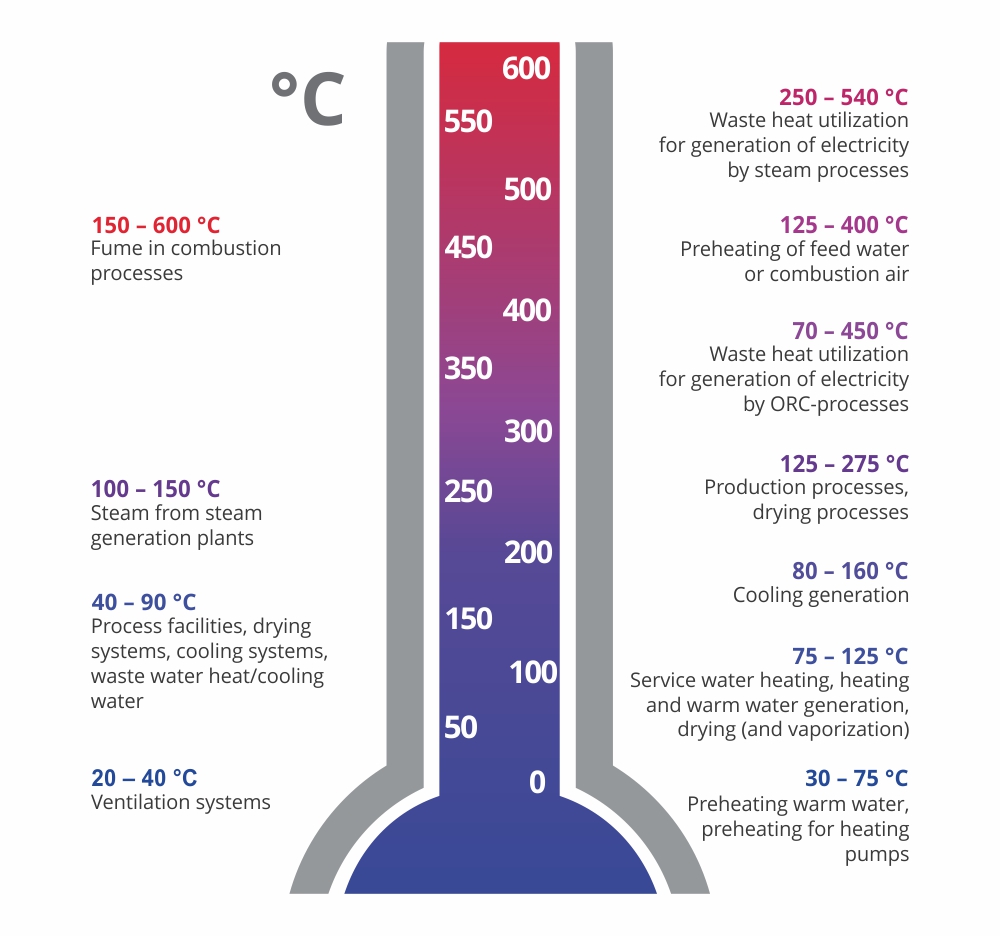Waste heat occurs in almost all thermal and mechanical processes. Sources of waste heat include hot combustion gases discharged to the atmosphere, heated water released into the environment, heated products exiting industrial processes, and heat transfer from hot equipment surfaces. As such, waste heat sources differ regarding the aggregate state (mainly fluid and gaseous), temperature range, and frequency of their occurrence.
The most significant amounts of waste heat are being lost in industrial and energy generation processes. The exact amount of industrial waste heat is difficult to quantify, but various studies have estimated that as much as 20 to 50 percent of industrial energy consumption is ultimately discharged as waste heat, and that between 18 and 30 percent of this waste heat could be utilized.[1]
An equally significant aspect is the demand side for heat energy. In EU generation of hot water, space heating and other forms of process heat accounts for well over half of the total energy use. According to EU data, in industry about 70,6 percent of total energy consumption was used for space and industrial process heating, while in households heating and hot water generation accounts for 79 percent of total energy consumption.[2] Waste heat therefore represents an important, but as of yet, not well-enough tapped energy source.
 © Deutsche Energie-Agentur
© Deutsche Energie-Agentur
[1] Waste heat recovery: Technology and Opportunities in U.S. Industry


